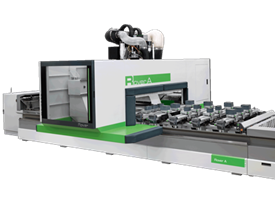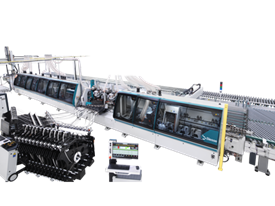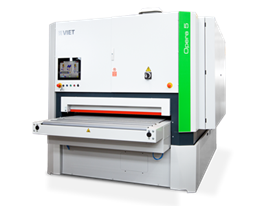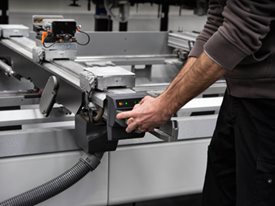CNC machines for plastic products use a solid block of plastic that is put against a moving cutting tool to build a model out of a mold that closely replicates the design. The cutting tool uses a digital design file to produce high-quality models cost-effectively. The CNC machine has been popular for creating plastic components.
CNC machines for plastic products get instructions and have a prototype it follows based on instructions made on Computer-Aided Design and Computer-Aided Manufacturing software. This gives the products an edge due to how consistent the products can be when manufactured in bulk. Compare this to manual production devices that are often deterred by older parts and don’t always ensure uniformity.
Here are a few additional uses of a CNC machine:
- The learning process and the steps taken to train the machine are fairly simple, making it a quick process.
- The designs can be replicated a thousand times because of their precision.
- The systems are fully automated, which ensures maximum safety.
- No machine is off-limits because the CNC can replicate complicated designs and follow just about any order.
- Machines that are manufactured at the CNC are usually smoother, while other production techniques could render rougher edges.
Why CNC is preferred for Plastic Products Manufacturing & Prototyping
No matter what, the industry, manufacturers, and distributors need to make prototypes for devices that replicate the look and functionality of a device. These prototypes are more than just a visual representation of the device, and they often have to display functionality. This is where the CNC has an edge over other forms of prototyping. 3D printers often cannot replicate complex parts and how capable they’re of working in certain ways. Engineering and production prototypes have mainly been associated with CNC production.
Types of CNC machining that are used commonly in the industry
Plastic CNC Turning
There are various kinds of CNC turning in the market, each serving its purpose. However, the crux of the turning mechanism is that a piece of plastic is held against a cutting tool that rotates rapidly to give it a smooth finish. Make sure you use the right turning tool for the right purposes. For instance, the shallower turnings are used for cylindrical or cone shapes.
Cutting edges can be tricky, and the wrong cut can create massive defects in a plastic piece. To minimize the scope of error, make sure you’re using generous relief angles. Also, to help decrease the material buildup and achieve a superior surface finish, polish top surfaces.
Plastic CNC Millings
This is a computer-controlled milling process that uses a cylindrical milling tool, also known as the milling cutter, to polish off the plastic good and reveal a finished product. The two primary millers are the 3-axis mills and the multi-axis mills. The 3-axis mill is good for the simpler mechanisms, while the multi-axis mill helps people manufacture complicated machinery.
Plastic CNC Drillings
The driller, as the name suggests, can drill into plastic surfaces with a spindle while leaving as few holes and errors in the model. Since the CNC drilling machine generates a vast amount of heat, it is important to eject the machine properly to reduce stress and damage to the machine.
Here is a list of applications that CNC applications are commonly used for:
Electronics
The scope of the CNC machine is vast when it comes to the electrics industry. Components such as semiconductors, casings, enclosures, and a myriad of other goods all rely on the CNC. Because products like mobiles and computers are manufactured in bulk, the CNC is a reliable way to get maximum output at the cheapest cost.
Medical industry
Medical equipment is notoriously expensive to manufacture, and with the demand increasing every day, CNC is a cheap and effective way to bulk manufacture these goods. MRI scanners, radiology machines, monitors, and so on are widely produced and distributed all thanks to this plastic product manufacturing machine.
Defense
Producing accurate products in a time-sensitive manner is the need of the hour for defense. The defense industry requires a wide range of goods, from communication, and effective transport to drills and modern mills- the needs of which are met by the CNC.
Food and Beverage Industry
Food is a personal choice just as it is a sustenance. So any machine that is involved in the food and beverage industry needs to be extremely sturdy while being safe and sensitive enough with meals while being mindful of what people consume every day.
To reach just the right balance, engineers rely heavily on CNC machines to produce durable goods that are fool-proof and free of errors while meeting regulatory standards.
Aerospace
Aerospace is an unforgiving industry- and for good reason! There is no space for error in an industry that requires such an eye for detail along with accurate work.
Not only does the Aerospace industry require spotless work, but it also needs countless prototypes for testing. CNC machined plastic prototypes are a useful tool for determining whether these parts are acceptable for airplane installation.
Equipment like fuselage, airborne equipment, ventilation ducts, rudders, etc.
Conclusion
The CNC also allows leeway for quick and precise corrections due to its programmability. CNC machines in India have been around for decades, and the time has given space to perfect the operation techniques and enabled it to produce products that are otherwise not possible with other production machines.



.png)





 Worldwide
Worldwide
 Italia
Italia
 United Kingdom
United Kingdom
 Россия
Россия
 France
France
 中国
中国
 Asia
Asia
 Deutschland
Deutschland
 España
España
 Schweiz
Schweiz
 North America
North America
 India
India
 Australia & New Zealand
Australia & New Zealand
 Türkiye Cumhuriyeti
Türkiye Cumhuriyeti
 Middle East
Middle East
 Brasil
Brasil